The Most Surprising Food That's Banned From The Summer Olympics
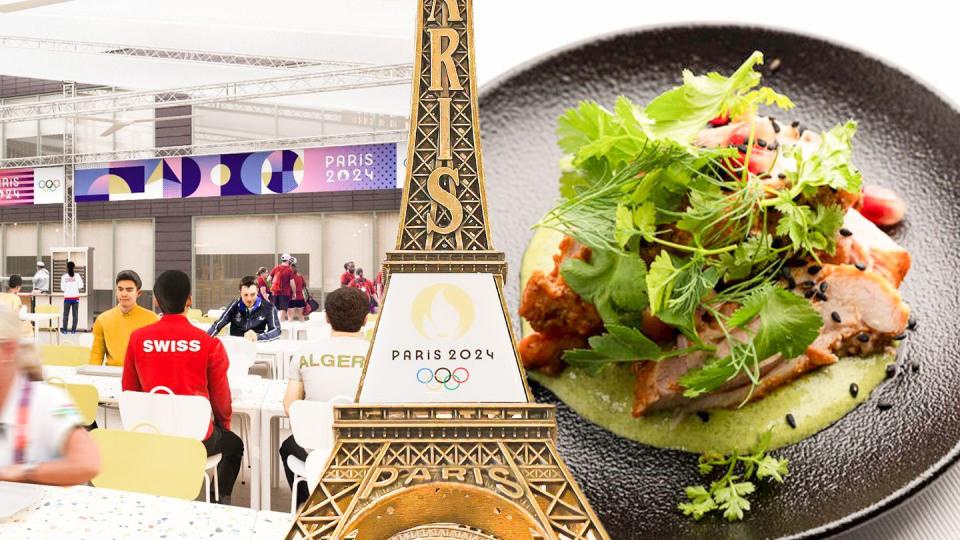
The transparent volume of ingredients needed for the Paris 2024 Olympic Village is staggering. It's basically the largest catering job to ever exist. The Olympics' food provider, Sodexo Live!, has had to buy up entire fields of produce, farms’ complete production of eggs, and chickens from all across France.
Preparing for 15,000 athletes and support staff to eat 40,000 meals per day in a 24/7 dining operation requires a lot of hustle.
Paris 2024 Summer Olympics Food Facts
The catering team will be preparing 2 million meals for athletes from 206 nations.
15,000 athletes will rely on the catering team to provide the right nutrition.
1/3 of all the food available will be plant-based, and 30% will be organic.
80% of the menu will be sourced from France, 25% within 25km of Paris.
The only items that are coming from other countries are bananas, coffee, and chocolate.
There will be 3 million bananas and 27 tons of coffee in the Olympics Village.
French fries will not be served in the Olympic Village because of the potential fire risk of using deep fryers in an area with so many people.
Avocados will also not be available because they would need to be imported from a great distance and require a lot of water to grow.
For the first time ever, the main dining hall at the Olympics features 47,000 reusable plates instead of disposable plates.
The condiment bar features 85 different options.
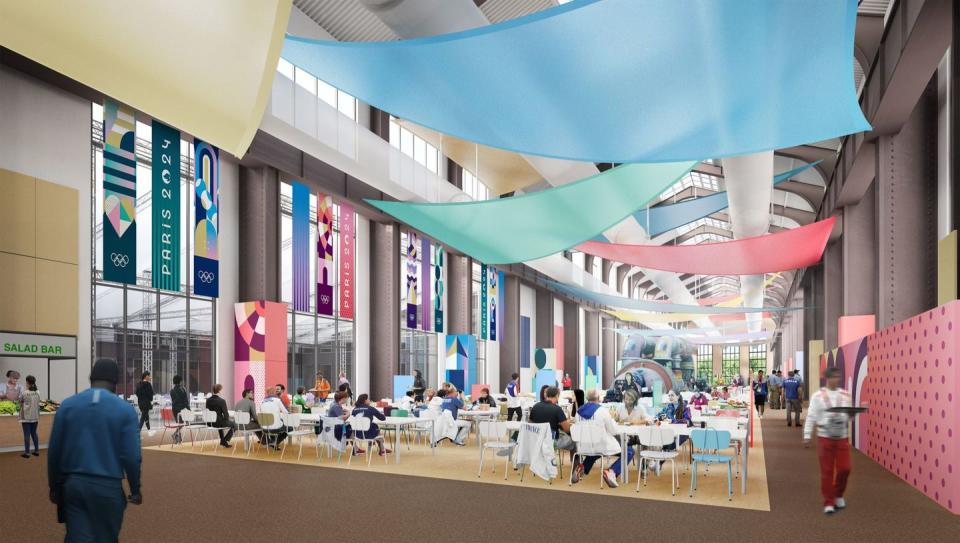
How To Feed a Village of 15,000 People
“Literally welcoming the people from around the world, 206 nations, is insane,” Estelle Lamotte, Sodexo Live! director of Athletes’ Village operations, tells Delish. “It is going to be quite fun to see all the different athletes around the village, seeing the culture. That is why they call it a village.”
And that village needs to eat. The catering company is ready to feed them in a specifically French way, with 80% of all food sourced from within France.
That’s a bit different than past Olympics. Other changes for this year's games include: no outside restaurants in the village, no private chefs in the village, the intensely local sourcing, and a menu pared down to focus on 500 recipes created uniquely by the company’s chefs.
Planning for Paris 2024 started with a discussion with the International Olympic Committee, which originally wanted 1,000 different dishes split over nine culinary themes. That clashed with the Paris 2024 vision to reduce food waste and its carbon footprint. “It was a lot of back-and-forth,” Lamotte says about a year of drafting a new range of options. “Everyone agreed, and we are very satisfied with what we came up with.”
The new plan, which features four different culinary themes—French, Asian, World, and African-Caribbean (including halal options)—got sign-off from the largest and pickiest delegations, from the United States to Australia and Canada to China. “They were really happy,” Lamotte says.
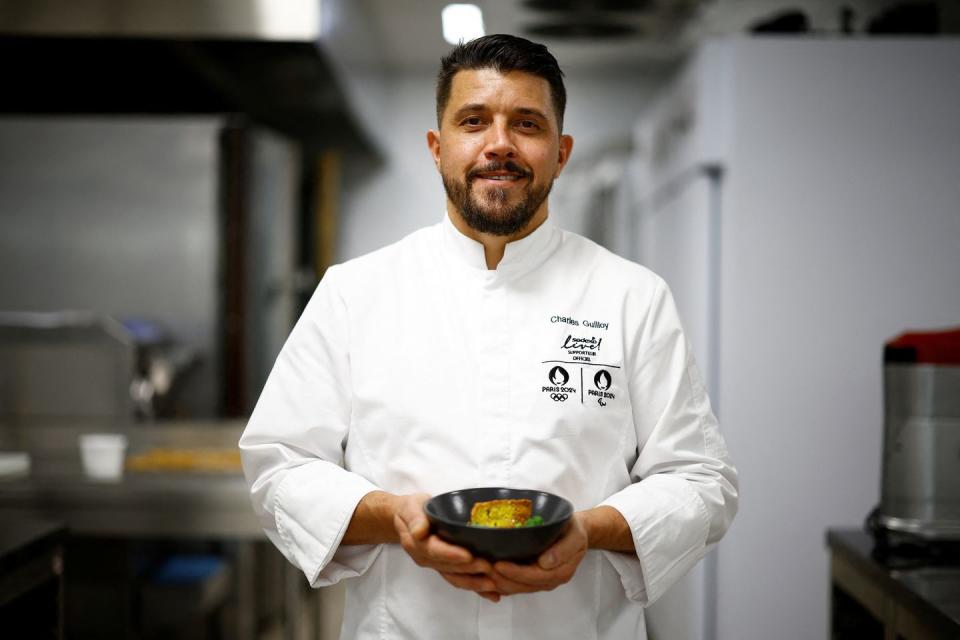
What's On the Menu?
With the themes locked down, Lamotte says they worked backward to find the best dishes to make for every theme. Those dishes formed the backbone of the menu.
Key recipes include a veggie bourguignon and a brandade de morue (salt cod and potato mash) for the French theme; minced pork with Thai basil and basmati rice and cauliflower and baked potato with turmeric dish for the Asian cuisine; bell pepper, onion, tomato and pepper stir fry and a fried shrimp with chermoula sauce for African-Caribbean; and a lamb and mint juice reduction and veggie moussaka for the world cuisine.
It's all designed by the company's chefs Charles Guilloy and Stephane Chicheri with help from famed French partner chefs Akrame Benallal, Amandine Chaignot and Alexandre Mazzia.
Other key signature dishes include chicken tandir by Benallal, poached egg croissant, artichoke cream, goat cheese and truffle by Chaignot, smoked salted hake with tapioca in a veggie bouillon by Mazzia, almado-style bread salad by Chicheri, and zaatar sweet potato with hummus and chimichurri by Guilloy.
The French menu would be remiss without sweet flambe and lemon tart. “We took all of the classics and put them on the menu,” Lamotte says. “People will be quite excited and particularly once they are done competition will really treat themselves and go for something they aren’t quite used to.”
The village features another truly French element: an in-village bakery holding workshops on how to make baguette, croissants, and other pastries.
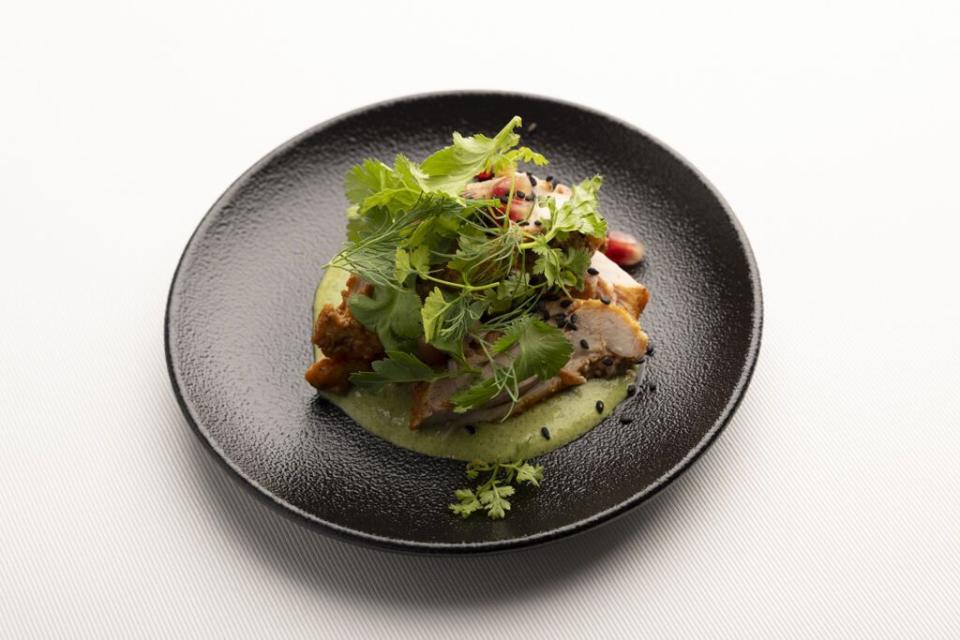
Buying Ingredients for Athletes From 206 Countries
There’s truly no catch-all recipe for success to maintain an Olympian diet. Some athletes opt for a high-protein, low-sugar diet while some load up on carbohydrates, Lamotte says.
Lamotte says white meat, rice, and pasta are crucial items as they stretch across all four themes. When it comes to the proteins, the chefs want the widest range possible—white meat and red meat both play heavily.
Pre-workout foods include nuts, yogurts and lean proteins with whole-grain bread or pasta, fruits, vegetables and plenty of electrolyte-rich fluids. Village dining needs to have it all. The site includes a salad bar, grill, cheese station, bakery, hot food buffet, fruit bar and desert bar to help make it work. The condiment bar features 85 different options.
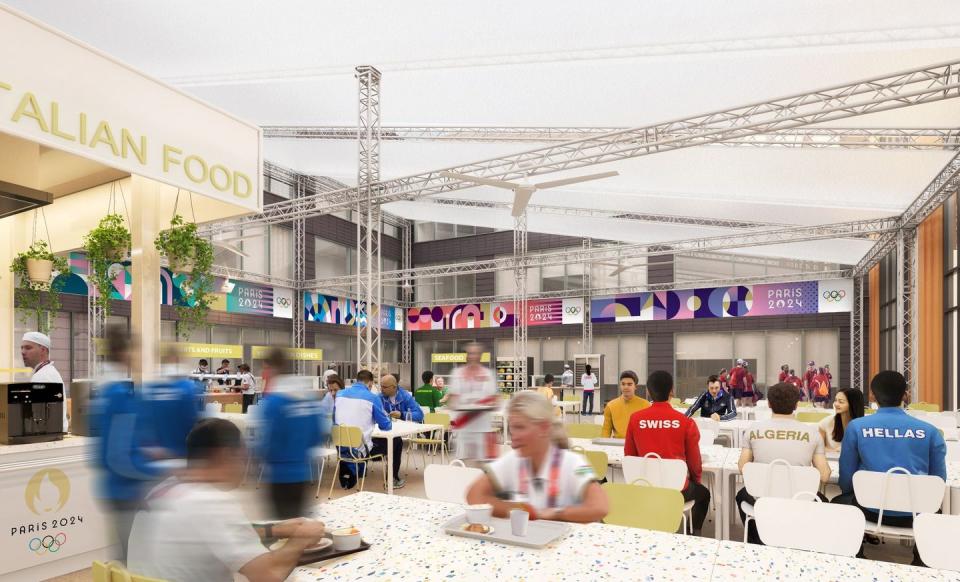
The Largest Dining Operation In the World
There are 15 different dining locales across the 52-acre village. The main dining hall, originally an electrical factory from 1903, runs 720 feet long and 72 feet wide to give the big space a cozy feel, Lamotte says. It will remain open 24 hours a day and at 3,500 seats is being called one of the largest restaurants in the world. For the first time ever for the Olympics, the main hall features 47,000 reusable plates instead of disposable plates.
The main hall features an extensive menu plan, and each location may feature something different, whether grab-and-go sandwiches, hamburgers or the ever-present need for a cup of coffee. The catering company has strategically positioned six units across the village close to residential areas to help with a crush of demand on the main hall, especially for during breakfast. And with so many support staff staying in the village alongside the athletes, not everyone is focused on an Olympic athlete-style diet, so expect a hefty share of burgers and pizza to flow from the village.
Sodexo Live! is bringing in more than 20 senior chefs from around the world. That allows chefs, for example, from India to highlight the African-Caribbean themed menu with halal meats and really talk to the athletes about the food options. The range of languages spoken by the chefs will help answer athlete questions.
Just ensuring enough ingredients were on hand was an exercise in Olympic-style logistics. All meat, dairy and eggs come from France, with 80% of all ingredients from the country and 30% from within 155 miles of Paris. “It is quite phenomenal,” Lamotte says. “The only items that are coming from abroad are bananas from Martinique [an overseas region of France], coffee, and chocolate.”
And there will be plenty of all of it, with 3 million bananas and 27 tons of coffee on order, two of the most popular items in the village.
Sodexo Live! has worked with some of the largest food producers in the country for over a year just to ensure a steady supply of ingredients—from fruits and vegetables to proteins. At times, they needed to buy up full fields of produce and entire farms’ production of meat, dairy and eggs.
“We worked with the producers and that was really important to get a sense of the volume needed just for the village alone,” Lamotte says.
The Athletes’ Village opens for two total months—it is the largest event in the world, after all—from ahead of the Olympics when athletes start arriving on July 12 all the way to September 11 and the close of the Paralympics. There is a three-day break between the two events. All athletes and roughly 90% of staff have access to the dining—a fork and knife logo on their accreditation badge offers them access—and it comes all-inclusive. “It is completely unlimited, and they do take advantage of it,” Lamotte says. “They eat a lot. Colleagues say they really indulge.”
The eating habits also change over the course of the event. As athletes finish competition, they start to treat themselves and go for new menu items, trying out fresh cuisines or simply eating more.
“The village is really a beautiful area,” Lamotte says. “I am looking forward to seeing the reaction of athletes who have participated in other Olympics and how they respond to our village.” Really, how they respond to the distinctly French expression of global cuisine.
You Might Also Like

 Yahoo Sports
Yahoo Sports 
